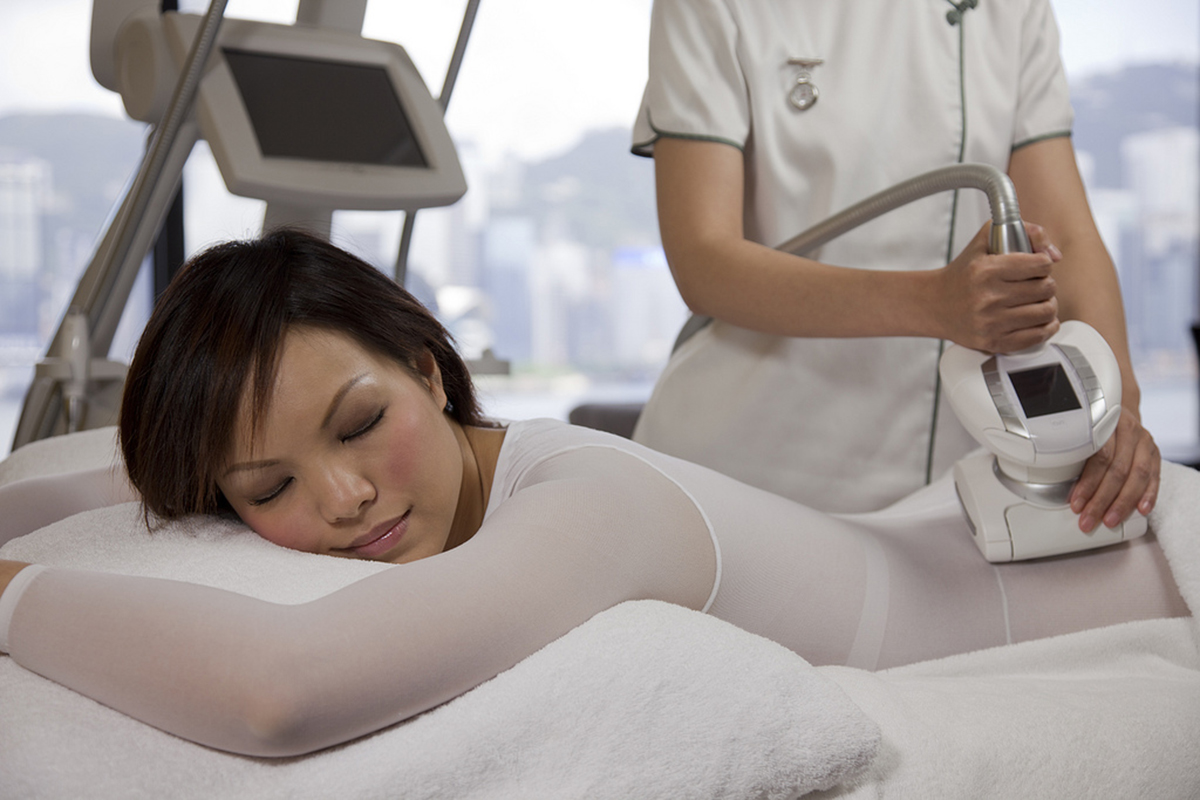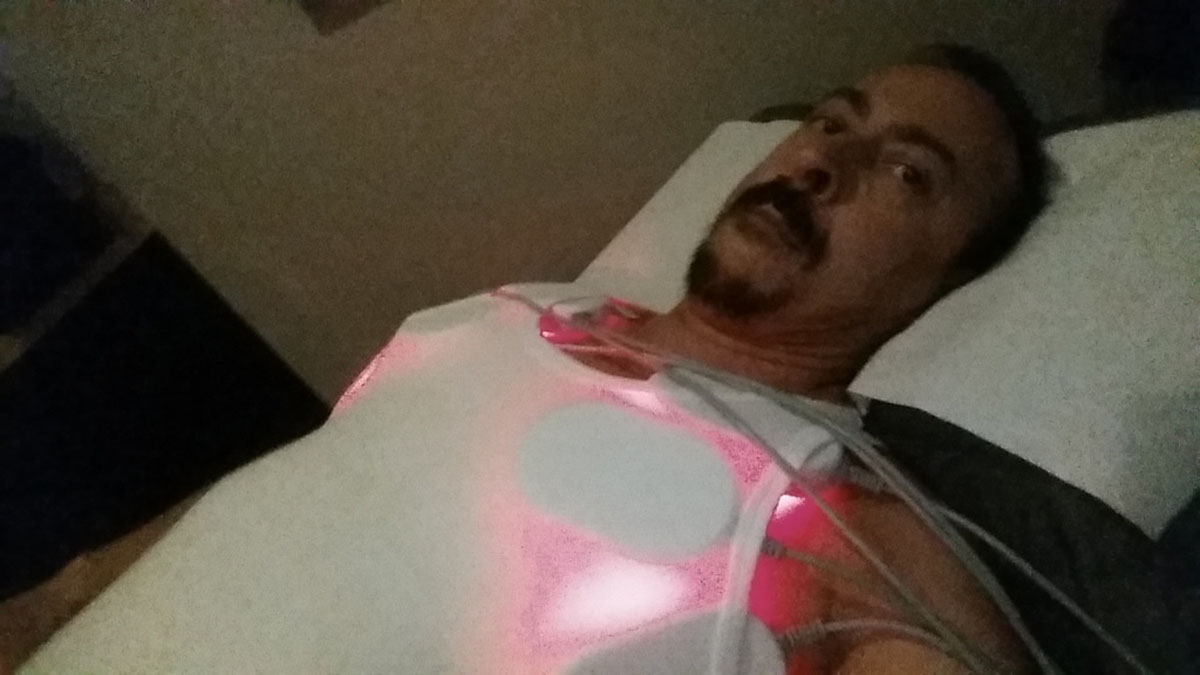Do you have an important event, like a wedding, coming up and would you like to look your best? Have you tried dieting, exercise and even weight loss pills to get rid of stubborn areas of fat, only to find yourself unsuccessful time and again?
You may find yourself fantasizing about liposuction — and you wouldn't be alone: one study indicated that 33 percent of women and 15 percent of men of all ages do exactly that. Would you actually go ahead and undergo an expensive and potentially risky surgery just to remove fat, though? The fact is that most people never move beyond toying with the idea of liposuction, and even those who do usually don't consider this procedure very seriously. People who have indeed undergone liposuction may be thrilled with the results, but they know all too well that surgery is no easy way out.

What On Earth Is Non-Surgical Liposuction?
The word "liposuction" means "suck the fat out". This, as you know, is exactly what surgical liposuction does. Non-surgical liposuction doesn't do that so it shouldn't be referred to as liposuction at all, but people do. What we're actually talking about is a range of "body contouring", "body sculping" or "non-surgical fat reduction" procedures. There is such a thing as fat reduction injections, but we're not tackling this, as it is banned in many places.
Here, we'll talk about laser light, radiofrequency, and cryolypolysis, all techniques that are quickly becoming more well-known and popular as alternatives to surgical liposuction.
Cryolipolysis: Freezing Your Fat Cells
Cryolipolysis involves freezing fat cells in order to kill them. The method was discovered by accident as doctors found out that infants "injured" by ice lollies lost fat in the affected areas, a process that later became known as "popsicle panniculitis". When the fact that cold temperatures can destroy fat cells became known, it was only a matter of time before someone would start experimenting with freezing fat cells for cosmetic purposes. Various cryolipolysis systems are currently in use around the world, but Zeltiq's CoolSculpting is the most notable of these. This system is FDA approved for use as a topical pain reduction device, but is commonly used as a fat reducer off-label.
READ 8 Weight Loss Myths Debunked
Cryolipolysis appears to be safe thus far, with minimal topical side effects, most commonly a skin rash. One study suggested that superficial fat tissue was reduced by 33 percent after treatment with a cryolipolysis device. The results take a while to show themselves, providers say. So, does CoolSculpting work? It seems that it has some potential in people who have stubborn pockets of fat but are of a healthy weight, but we have to note that clinical data is still limited and that it's not clear how long the effects of the treatment last.
Non-Surgical Lipi: Ultrasound And Laser
Ultrasound As A Fat Reduction Technique
High-intensity focused ultrasound essentially does the opposite of cryolipolysis: during treatments that use this method, your fat tissue is heated to kill fat cells, rather than frozen. The heat is directed at the fat cells under the skin, but doctors and cosmetologists who work with this method also claim that passive heating of the skin leads to a tighter look and renewed collagen production. Liposonix and Ultrashape are two examples of fat reduction systems that use ultrasound.
One advantage of high-intensity focused ultrasound is that the treatment can be specifically focused on the fat layer under the skin, leaving the skin and blood vessels completely intact. After fat cells are targeted by the ultrasound transducer used — again for an hour — the body's immune system deals with them. They are ultimately transported to the liver and eliminated from the body.

It's also used for eyebrow lifts at a lower intensity. People who undergo this treatment may experience some discomfort and bruising, and anesthesia is available for those who think they may need it.
Low-Level Laser Therapy To Lose Fat
Finally, low-level laser attacks the integrity of fat cells' cellular walls, allowing the fat to "break free" and move out, where it can again be attacked by the body's immune system and removed through the lymphatic system. Clinicians recommend cardio exercise and proper hydration to encourage this process. Unlike the other systems, systems using low-level laser use multiple arms to deliver the laser treatment, and up to eight shorter sessions of about 30 minutes are recommended for optimal results.
Should You Give Any Of These Non-Surgical Lipo Treatments A Go?
Well, in short, that's up to you: currently available data doesn't show that these devices have long-term adverse health effects, and many of the systems are FDA approved. Of course, it's important that cosmetic treatments don't leave you with unexpected health problems, but you want more than that — when you pay for these treatments, which though much less expensive than liposuction still cost a fair bit, you expect to see results.
Limited clinical data, often sponsored by the relevant companies themselves, do show that these treatments offer the potential for fat reduction. So, too, do numerous YouTube videos in which people who undergo non-surgical lipo treatments show what they looked like before and after the treatments. (Nope, there's no guarantee that these folks aren't working for the relevant companies, being paid to promote them. There's no guarantee that the "after" portion of these videos was taken right after either. However, some of the results do look quite dramatic.)
READ What You Need To Know About Plastic Surgery
Non-surgical liposuction appears to be an option for those who want to lose fat for specific events, but who are already at a healthy weight and just have abdominal flab, love handles, "extra breasts" or "bingo arms". If you do give any of the non-surgical fat reduction treatments a go, please let us know how you got on in the comments below!
- Photo courtesy of InterContinental Hong Kong via Flickr: www.flickr.com/photos/intercontinentalhongkong/6197549702
- Photo courtesy of InterContinental Hong Kong via Flickr: www.flickr.com/photos/intercontinentalhongkong/6197549702
- Photo courtesy of osseous via Flickr: www.flickr.com/photos/osseous/15234413671


Your thoughts on this